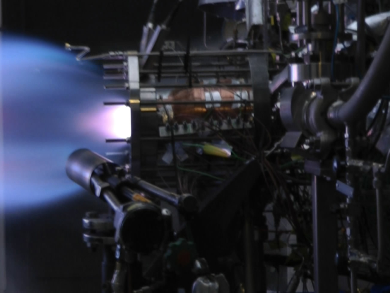Lysan Pfützenreuter and his team DLR, Germany, and colleagues from AEB, Brazil, developed and testes two injection heads based on different concepts to find the optimum technology for the propulsion of a future German-Brazilian rocket. The tests took place at the P8 test facility of the DLR Institute of Space Propulsion, Lampoldshausen, Germany, between July and December 2016. The injection heads differ in how the fuel is sprayed into the combustion chamber and mixed. One system was developed by the Instituto de Aeronáutica e Espaço (IAE), Brazil; the other by Airbus Safran Launchers, Germany, as part of the SALSA project (system design of an alcohol LOX propulsion as a substitute for storable fuels).
The injection head is designed to one day be at the core of the new L75 engine of small Brazilian launch vehicles. The new technology makes it possible to use ethanol as fuel. These ‘new’ fuels can also significantly reduce the cost of space travel, since the cost for safe storage and handling of these substances is significantly lower than that for hydrazine. In Europe it is questionable, how long hydrazine will continue to be approved as a fuel under the REACH regulation (Registration, Evaluation, Authorization and Restriction of Chemicals), the European Union regulation controlling the authorization and use of chemical substances since 2007.
- German Aerospace Center (Deutsches Zentrum für Luft- und Raumfahrt; DLR), Cologne, Germany
- Agência Espacial Brasileira (AEB), Brasília, Brazil
